
Increasing medical capacity in Iran: Necessities, challenges & solutions
Barakat Health & Pharmaceuticals Group: “If the increase in medical capacity is implemented without providing the necessary faculty and resources, the quality of education will decline. Moreover, the increase in medical capacity is a law issued by the Supreme Council of the Cultural Revolution, and what is important is that we align this growth with the needs of the country and direct graduates to underserved areas,” Mohammad Reza Zafarghandi, Minister of Health, Treatment, and Medical Education stated recently,
So, the importance of increasing medical capacity, particularly in underserved regions, is crucial. Health is one of the fundamental human needs that profoundly affects the quality of life and social development. In fact, health and hygiene are considered the cornerstones of sustainable development and social welfare. In countries like Iran, with vast geographical and economic diversity, improving the healthcare system and increasing medical capacity, especially in underdeveloped areas, holds great significance.
Iran, a country with a population of over 85 million, has a relatively advanced healthcare system, but medical services are not evenly distributed. Underdeveloped and remote regions still face shortages in medical facilities and services. According to reports from the World Health Organization and the Iranian Ministry of Health, these areas suffer from challenges such as a shortage of doctors, lack of access to medical equipment, and inadequate infrastructure.
Key Challenges
Currently, many underserved regions in Iran face issues such as a shortage of physicians, equipment limitations, and lack of access to advanced healthcare services. To understand the situation better, consider the following details:
– Shortage of Doctors and Medical Staff: According to official statistics, the number of general practitioners and specialists in many underdeveloped regions is very low compared to the population. This shortage leads to longer waiting times for medical services and reduces the quality of treatment.
– Lack of Medical Infrastructure: In many of these areas, hospitals and medical centers suffer from a lack of advanced medical equipment, medication, and basic facilities. This forces many patients to seek treatment in distant centers, which creates additional problems.
– Economic and Financial Issues: The high costs of building and equipping medical centers, and the lack of sufficient financial resources for underserved regions, are major obstacles to improving healthcare conditions. These financial issues result in many healthcare projects being left incomplete.
– Geographic and Economic Disparities: Major differences exist between healthcare facilities in large cities and those in rural and underprivileged areas. These disparities stem from economic, infrastructural, and geographical differences, affecting access to medical services.
– Doctor and Medical Staff Migration: Physicians and nurses often migrate from underserved regions to larger cities due to a lack of facilities, lower quality of life, and limited job opportunities, exacerbating the shortage of human resources in these areas.
– Lack of Coordination Among Institutions: Sometimes, the lack of coordination between the Ministry of Health, government organizations, and local institutions reduces the efficiency and effectiveness of healthcare programs in underdeveloped regions.
– Cultural and Social Problems: In some areas, cultural and social challenges, such as resistance to modern medical services, lack of sufficient awareness about health and treatment, and traditional beliefs, hinder the effective utilization of medical services.
Practical Solutions
1. Attracting Doctors to Underserved Areas: Creating incentive programs such as higher salaries, housing benefits, and professional training can help attract doctors and medical staff to underprivileged regions. Scholarship programs for medical students who commit to serving in these areas after graduation can also be effective.
- Improving Infrastructure and Providing Medical Equipment: Investing in the construction and equipping of medical centers in underserved areas, especially through the use of government resources and public-private partnerships, can help resolve infrastructural problems. Ensuring the provision of high-quality medical equipment and regular maintenance for existing equipment is also crucial.
- Strengthening Medical Education: Enhancing educational programs in universities and creating specialized courses to improve the skills of doctors and medical staff in fields related to underserved areas can improve the quality of medical services. Online educational programs and remote training can also support this goal.
- Developing New Technologies: Utilizing new technologies like telemedicine and health apps for remote medical consultations can increase access to healthcare services in remote areas. These technologies can help provide basic medical services and consultations in areas with a shortage of medical staff.
- International Collaborations and Public-Private Partnerships: Collaborating with international organizations and NGOs to secure financial resources, medical equipment, and educational programs can help improve healthcare services in underdeveloped areas. These partnerships can include programs for providing medicine, medical equipment, and healthcare projects.
Government & Private Sector
Improving medical conditions in underserved areas of Iran requires effective cooperation between the government and the private sector. Both can utilize their resources and expertise to improve the quality of healthcare services in these regions. By using specific strategies and coordinated actions, they can address existing challenges and create new opportunities for development.
Government Actions:
Developing Healthcare Infrastructure: The government can invest in building hospitals, clinics, and new healthcare centers in underserved areas to improve access to medical services. Providing up-to-date medical equipment and medications should be a top priority.
Improving Transportation Infrastructure: Upgrading roads and transportation routes to facilitate patient access to healthcare centers is essential. Additionally, ensuring transportation options for transferring patients from remote areas to specialized centers should be considered.
Incentive Programs for Medical Personnel: The government can offer incentives such as salary increases, housing loans, and special training opportunities to encourage doctors and nurses to work in underserved areas. These programs can include financial aid, low-interest loans, and welfare benefits.
Increased Healthcare Budgets: Allocating more financial resources for healthcare projects in underserved areas through government budgets, especially via the Ministry of Health, is a fundamental step.
Private Sector Actions:
Investment in Healthcare Infrastructure: The private sector can help improve healthcare services in underserved areas by investing in hospital construction, clinics, and medical equipment provision. This investment can be direct or through public-private partnerships.
Corporate Social Responsibility (CSR) Programs: Companies can support healthcare and treatment conditions in underserved areas through CSR programs. These programs can include providing medications, medical equipment, and supporting healthcare projects.
Joint Projects: The private sector can collaborate with NGOs, philanthropists, and international organizations to implement joint projects for improving healthcare in underserved areas. This collaboration can include providing medical equipment, conducting educational courses, and funding healthcare projects.
Supporting Education and Research*: Private companies and institutions can support educational and research programs in healthcare to train medical staff and advance medical knowledge in underserved areas.
Conclusion
Given the importance of health in sustainable development and social welfare, focusing on underprivileged regions and efforts to improve their conditions will help create a more equitable and efficient healthcare system in the country. The development of medical capacities requires a comprehensive approach that includes improving economic conditions, developing infrastructure, and utilizing modern technologies.
Additionally, increasing medical capacity requires coordinated efforts between the government and the private sector. By implementing these measures, we can improve the quality of life and public health in underserved areas and reduce existing inequalities in the healthcare system.
-
Barekat Health & Pharmaceutical Group at the 10th Iran Pharma Exhibition

-
Ali Safa visits Sobhan Oncology & Sobhan Darou
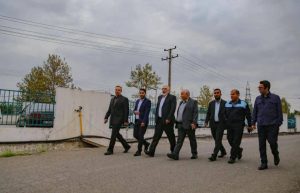
-
Pirsalehi & Safa visit Saman Daroo 8 Knowledge-based Company
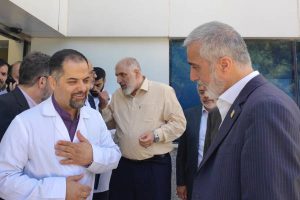
-
Barekat Managing Director Visits Samen Pharmaceutical Company
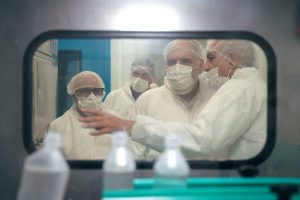
-
Honoring Pharmacists’ Day

-
Barekat Top Executives Visiting to Barekat Hospital
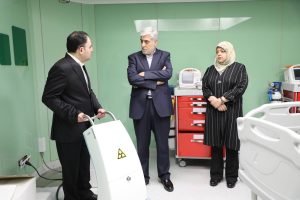
-
Alborz Darou honored as Top Exporter of Qazvin Province in 2024
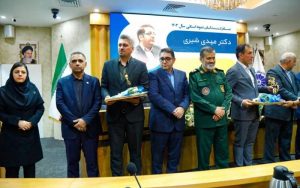
-
Footsteps & Gazes of Disease: A Revolution in Early Diagnosis

